Economic Equality Caucus
which advocates for economic equality across the USA.
| Home | Organizational Structure | State Coordinators | Executive Director | Caucus Articles | Memberships | |||||
| "Delta Vision, Delta Voices" | ||||||||||
|
Help Advocate for Economic Progress and Equality. Donate to the Delta Caucus/Economic Equality Caucus. |
||||||||||
Delta Grassroots Caucus Events

Credit Michael Hibblen/ KUAR News, Arkansas Public Radio; Former President Bill Clinton speaking to the Delta Grassroots Caucus on May 2, 2013, at the University of Arkansas Clinton School of Public Service, Little Rock
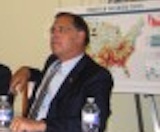
U. S. Senator John Boozman, Arkansas, at a Delta Grassroots Caucus meeting at the US Capitol
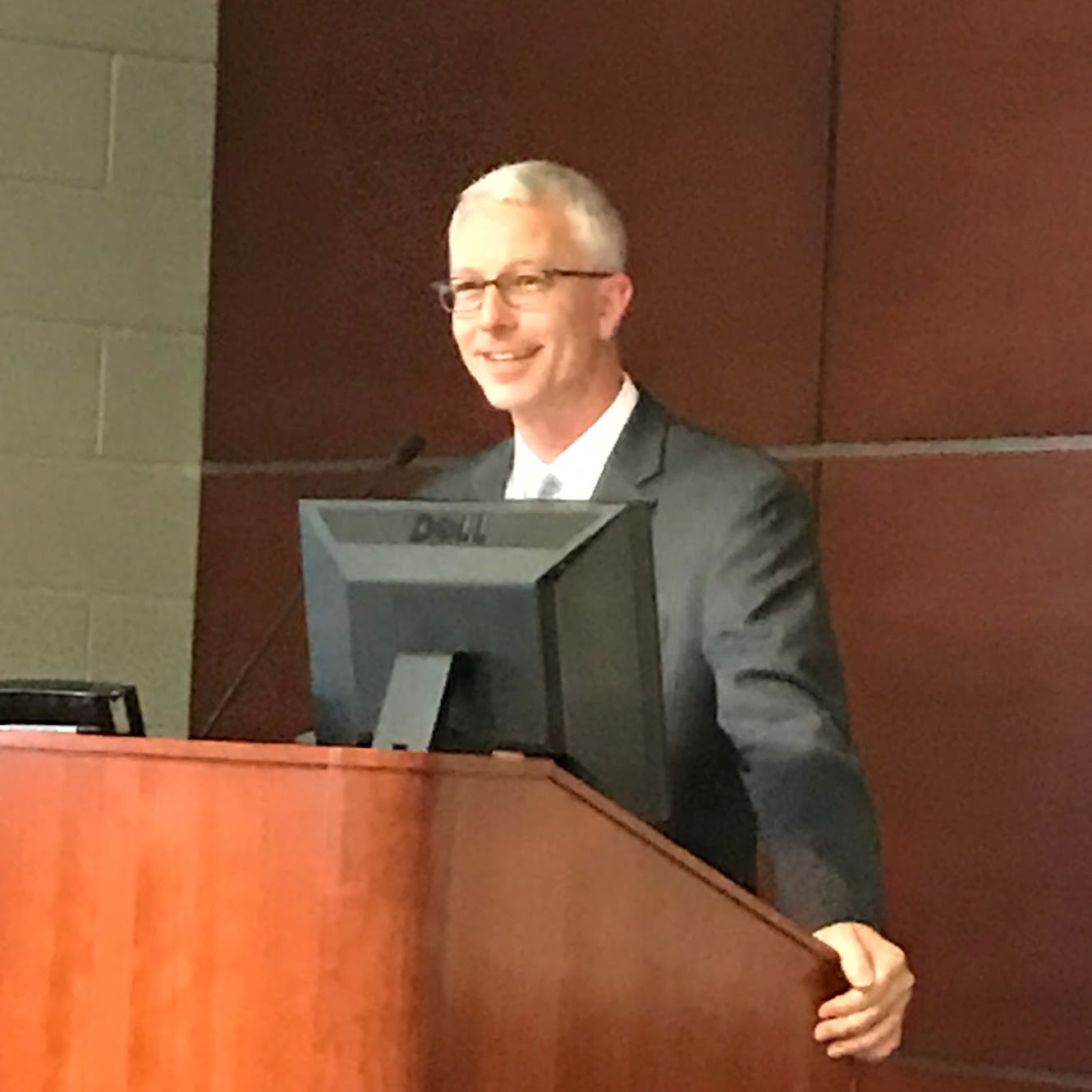
Brad Cole, Executive Director of the Municipal League of Illinois; previously a senior aide to former Republican US Sen. Mark Kirk of Illinois, earlier Mayor of Carbondale, Illinois, veteran Delta regional advocate, speaking at the Delta regional conference in West Memphis, Arkansas on April 26, 2019.

President Bill Clinton makes a comment to Delta Caucus Director Lee Powell at a meeting in Blytheville, Arkansas (in the northeast Arkansas Delta) on Nov. 2, 2014
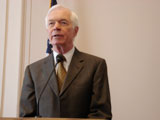
The Delta Caucus would like to pay tribute to the late, great U.S. Sen. Thad Cochran of Mississippi, a powerful force in the US Senate for decades and a champion for the Delta. Sen. Cochran passed away on May 30, 2019. He spoke to the Delta Caucus on many occasions over the years (he is pictured above speaking to a Caucus event on Capitol Hill in Washington, DC) and his thoughtful, courteous and bipartisan leadership will be sorely missed.
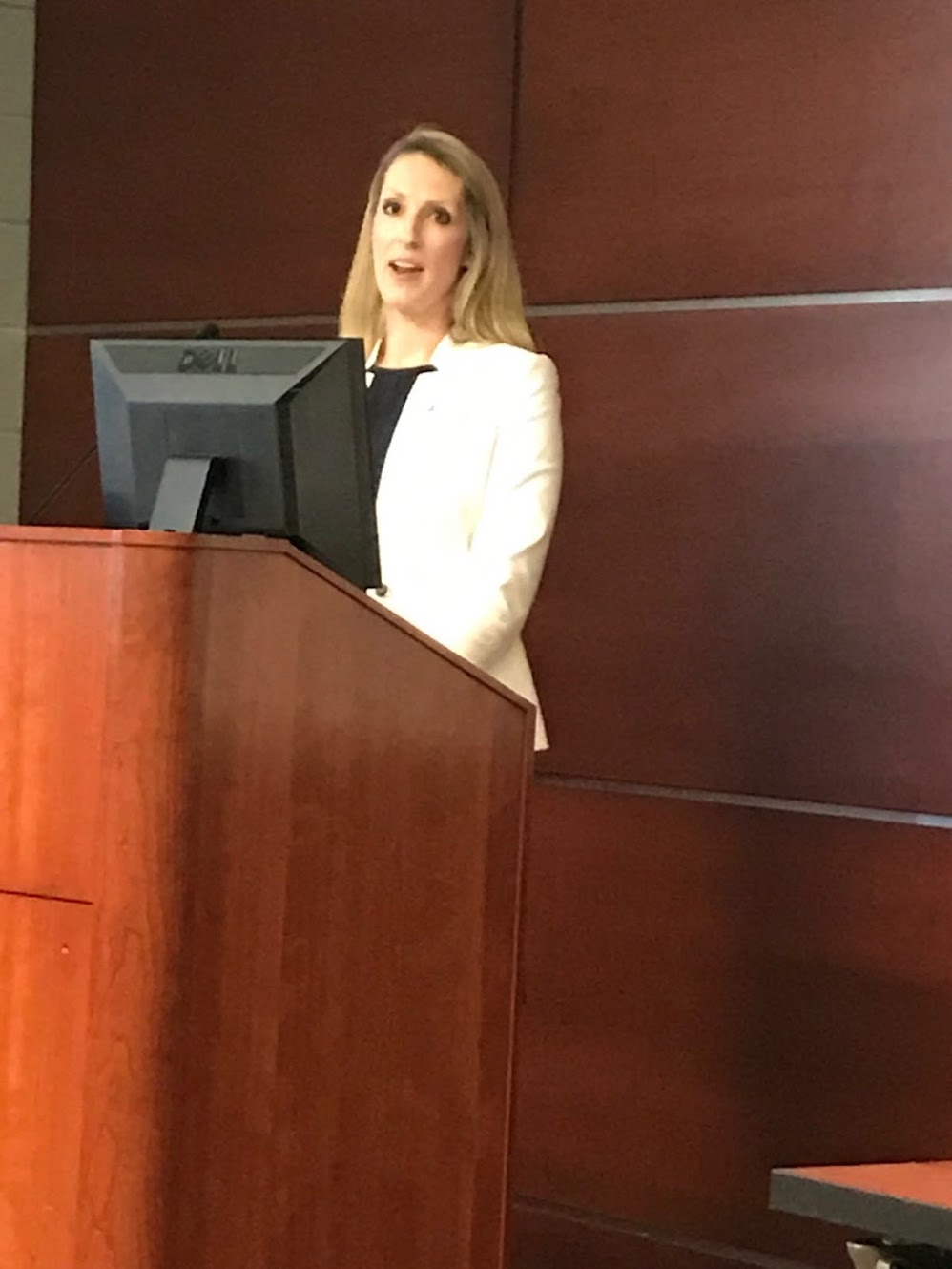
Marcie Lawson, Executive Director, Sikeston, Missouri Regional Chamber and Area Economic Development Corporation, speaking at the Delta regional conference in West Memphis, Arkansas on April 26, 2019.
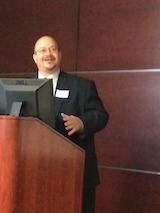
Alan Gumbel, Greater Memphis Alliance for a Competitive Workforce, Memphis, Tennessee, speaking at the Delta regional conference in West Memphis, Arkansas on April 26, 2019.
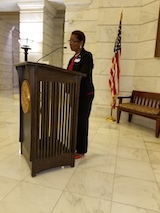
Mayor Shirley Washington of Pine Bluff, AR, speaking to the Delta Caucus at the Arkansas Capitol Rotunda in 2017.
Memorandum on USDA Reorganization Issues
Posted on August 06, 2025 at 11:34 AM
Delta Grassroots Caucus
August 6, 2025
Memorandum to Delta Region Members of Congress and concerned citizens about USDA Reorganization
From:
The Delta Grassroots Caucus (Lee Powell, executive director) and Caroline Thorpe, a USDA official for 35 years who retired recently.
Lee Powell is director of the Delta Caucus, a nonprofit grassroots advocacy organization for the 8-state Greater Delta; former Presidential appointee at USDA in the Clinton administration; earlier a senior aide to a Congressman representing the heavily agricultural First District in Arkansas; originally from Little Rock. Caroline is Lee Powell’s wife and they live in Waldorf, Maryland in the Washington, DC area.
5030 Purslane Place Waldorf, Maryland 20603 Phone: 240-994-4207 Email: carothorpe78@gmail.com and Leepowell@delta.comcastbiz.net
Re: Comments on the Senate Hearing: Agriculture and Nutrition Service Review of USDA Reorganization Proposal – July 30, 2025
We are writing to provide formal comments on the proposed USDA reorganization and to raise serious concerns regarding statements made by USDA Deputy Secretary Judge Stephen Vaden during the July 30, 2025, Senate hearing.
USDA nutrition, rural development and agriculture programs are absolutely vital for the Greater Delta Region from southern Illinois down through Arkansas and Mississippi to New Orleans, with our largely small town and rural areas, unfortunately high food insecurity in many areas, and heavily agricultural productivity.
Importance of having a sufficient number of senior personnel based in the Washington, DC offices: This is constructive and efficient, and the 4,600 employees currently based there are still much less than 10 percent of the workforce of USDA. It is highly beneficial to have senior personnel, the administrators of key agencies, Under Secretaries, and other key offices located in the Washington, DC headquarters, where they can gather in one conference room and resolve inter-agency and department-wide issues, as well as consult with Members of Congress and other major institutions. As a senior official at USDA in the 1990s to 2001, Lee Powell found it efficient to have all the top personnel at the Washington, DC headquarters where they can easily convene and consult in person.
Executive Summary below, followed by a detailed memorandum further on.
Executive summary:
Comments and Recommendation Based on the Senate Hearing: Agriculture and Nutrition Service Review of USDA Reorganization Proposal – July 30, 2025
First of all, we would emphasize that the reorganization was presented as a fait accompli with very little prior consultation with stakeholders. The Greater Delta Region is a vast, largely rural and agricultural region across eight states, yet none of the five regional hubs is close to this huge area for which USDA is so vital. Kansas City Missouri is at the opposite end of the large state of Missouri from the southeast Missouri Delta and very distant from the rest of the region. The other four hubs are not even remotely close to the Delta—Indianapolis, Indiana; Raleigh, North Carolina; Fort Collins, Colorado; and Salt Lake City, Utah.
Memphis would be a logical and great choice for one of the regional hubs: We know all regions can’t be included, but Memphis is a large city with an existing, extensive USDA facility (the Memphis Cotton Classing Office) in the heart of the 8-state Greater Delta. Adding a regional hub in Memphis would be a great choice, although it appears that they have already made their decision. Again, this points out that they erred seriously in not engaging in real consultation with the stakeholders.
We are writing to provide several recommendations and formal comments on the proposed USDA reorganization. The hearing raises serious concerns regarding statements made by USDA Deputy Secretary Judge Stephen Vaden at the Senate hearing. We offer the following points for consideration:
1) Cost and Disruption of Relocation: Ninety percent of USDA’s approximately 98, 000 employees currently work in rural areas working on agriculture, nutrition and rural development issues directly with the people they serve. The great majority of USDA employees already work on the ground across the country. Therefore, relocating another 2,600 employees from the National Capital Region (NCR) to the Midwest and the West (Utah) makes no sense. Thus, the USDA reorganization is a solution in search of a problem that does not exist.
2) George Washington Carver Center(GWCC): Judge Vaden implied that most of the USDA buildings in the National Capital Region are decrepit. GWCC is a state-of-the-art facility in Beltsville, Maryland. It was renovated in 2022 and should continue to be a USDA worksite, which would reduce relocation costs.
3)Most of USDA South Building has been recently renovated: Contrary to claims, over 70% of the South Building has been recently renovated. Discarding this historic property without cost-benefit analysis would waste taxpayer dollars. The 30 percent of the renovation not yet done should be completed.
4) Beltsville Agricultural Research Center (BARC): This center is critical for agricultural research and national security. Relocation risks extensive loss of expertise and disruption of vital long-term research and leaves the U.S. vulnerable to security issues like bioterrorism.
5) Housing Costs and Relocation in Salt Lake City, Utah: The proposed relocation hub of Salt Lake City has housing costs higher than much of the DC region. Moving employees there does not solve cost problems and only disrupts work.
Primary Recommendations:
1) Retain USDA employees in the George Washington Carver Center, a state-of-the-art building renovated in 2022. This would minimize cost and disruption to USDA’s mission-critical work and preserve institutional expertise, while maintaining operational resilience.
OR
2) Make the South Building a Multi-use Agency building for USDA, Homeland Security and any other Defense/security Department or Agency. House all National Capital Region (NCR) staff here, and USDA would have no other external building other than the BARC. This simplifies matters.
DETAILED MEMORANDUM
Re: Comments on the Senate Hearing: Agriculture and Nutrition Service Review of USDA Reorganization Proposal – July 30, 2025
We are writing to provide formal comments on the proposed USDA reorganization and to raise serious concerns regarding statements made by USDA Deputy Secretary Judge Stephen Vaden during the July 30, 2025, Senate hearing.
Caroline recently retired from USDA after 35 years of service in the Animal Plant Health Inspection Service (APHIS), Agricultural Marketing Service (AMS), and Grain Inspection Packers and Stockyards Administration (GIPSA); Lee Powell director of the Delta Caucus, former Congressional aide to the agricultural 1st District of Arkansas, and a former USDA official as well. We offer the following points for your consideration:
1)Cost and Disruption of Relocation: Ninety percent of USDA’s approximately 98,000 employees currently work in rural areas working on agriculture, nutrition and rural development issues with the people they serve. The great majority of USDA employees already work directly on the ground across the country. Therefore, relocating 2,600 employees from the National Capital Region (NCR) to the Midwest makes no sense. Thus, this is a solution in search of a problem that does not exist.
This will impose significant costs, far-reaching service disruptions, and security risks. Relocation estimates may exceed $75,000 per employee, which will take years to recover. Judge Vaden did not have figures on the cost of moving employees, relocation costs or work analysis. The USDA needs to provide cost analysis.
2) George Washington Carver Center (GWCC) is a state-of-the-art facility: Judge Vaden implied that most of the USDA buildings in the National Capital Region are decrepit. To the contrary, GWCC is a state-of-the-art facility in Beltsville, Maryland. It was renovated in 2022, and its sale would be a waste of taxpayers’ money. The building could house an estimated 1,500 employees and meets congressional space utilization requirements of being at 60 percent capacity. Retaining staff at this site would reduce relocation costs and disruption.
3. Most of USDA South Building has been recently renovated: Contrary to claims, over 70% of the South Building has been recently renovated. Discarding this historic property without cost-benefit analysis would waste taxpayer dollars. A critical point is that five of seven wings of the USDA South Building have been newly renovated; Specifically, wings two, three, four, five and seven. Judge Vaden kept mentioning this building was expensive to maintain. While we do not dispute this, please consider there are many other historic DC buildings that are very expensive to maintain.
Recommendation: USDA should provide Congress with a cost-benefit analysis and evaluate whether it is actually more cost effective to locate employees in the South Building rather than relocating them in other cities.
Recommendation: Should recommendation two of this memo not be considered, perhaps the South Building could be a multi-agency use building as Homeland Security already has a number of offices here and the military uses this building numerous times as a staging center during large events in the NCR. USDA could put all NCR employees in this building, with Homeland Security or other agency offices filling the remaining space. USDA would then simplify and get rid of all other buildings other than BARC in the NCR.
4)Beltsville Agricultural Research Center (BARC): This center is critical for agricultural research and national security. Relocation risks extensive loss of expertise and disruption of vital long-term research. Selling BARC would leave us vulnerable to security issues like bioterrorism and disruption of ongoing projects. We did not hear a clear plan on where this critical center will be located or funding for such a move, which will take years.
Further, the best and highly specialized staff needed for this mission-critical work will be harder to hire outside the Washington, DC region. The long-term research would likely be disrupted, and there is a high-risk of long-term loss of institutional knowledge and capability should the scientists choose not to relocate. These people and the results from their work are priceless and beneficial to every American.
5)Housing Costs and Relocation in Salt Lake City, Utah: The proposed relocation hub of Salt Lake City, has housing costs higher than much of the DC region. This undermines the rationale of relocation as a cost-saving measure. Caroline Thorpe lives in Charles County, MD, a suburb of Washington, where the median cost of a house is $435,000.
Meanwhile, Judge Vaden said that in Washington DC, houses were selling for a million dollars, using the example of Arlington, VA. This is an unfair comparison as Arlington is an unusually expensive area that is also the headquarters site for the new Amazon offices. This does not reflect the housing market of the entire Washington, DC area.
Recommendation: Therefore, we would propose another city than Salt Lake City. Caroline Thorpe was there approximately a year ago for a technology conference. Without prompting, many locals consistently complained about the escalating cost of living there due to the increase in technology companies.
6)National Security Risks of Moving the Beltsville Agricultural Research Center (BRAC): Disrupting agricultural research operations weakens biosecurity preparedness and jeopardizes U.S. food security. We already had two Chinese researchers try to import a deadly wheat fungus earlier this year. The disruptions of USDA’s reorganization will leave us vulnerable to bioterrorism for which we will not be prepared. It is absurd to move the research center without a plan or funding.
We were very concerned that many of the Senators at the hearing did not express a stronger concern about a national agricultural research strategic plan from Washington, DC. While concerned about their research centers located in their states, they did not probe the implications of the dissolution of the BARC. To disrupt research plans and the BARC at the NCR means we may lose our highest researchers and critical plans.
7) Workforce Impact: USDA has already lost 15,000 employees. Forcing relocation will result in additional attrition, further eroding mission capacity. Historical data showing retention estimates are overly optimistic. Further, Secretary Rollins said that she expects that only 50-70 percent of employees to be relocated will stay with USDA. The lessons from the relocations under Secretary Purdue indicate that Secretary Rollins’ estimate may be overstated.
Further, employees will be hurt by the personal moving expenses (which should be covered but may not be fully covered depending on funding availability) and other disruptions of relocation. Right now, employees are being thrown into open critical positions with little preparation. Currently staff need time to develop and adjust to their new work to ensure the effectiveness of USDA. Therefore, we suggest a serious reconsideration of the wisdom of pursuing the reorganization.
This proposal appears aimed at reducing the federal workforce rather than improving USDA’s efficiency or effectiveness. This plan would actually reduce efficiency. A proper reorganization must include rigorous analysis of mission functions, staffing needs, and transition costs—none of which have been provided.
Primary Recommendations:
1) Retain USDA employees in the George Washington Carver Center, a state-of-the-art building renovated in 2022. This would minimize cost and disruption to USDA’s mission-critical work and preserve institutional expertise, while maintaining operational resilience.
OR
2) Make the South Building a Multi-use Agency building for USDA, Homeland Security and any other Defense/security Department or agencies. House all National Capital Region (NCR) staff here and USDA would have no other external building other than the BARC. This simplifies matters.
Thank you for your attention to this critical matter. we respectfully request your advocacy to ensure a responsible, data-driven approach to USDA reorganization that safeguards both our agricultural security and federal workforce. Sincerely,
Caroline Thorpe is a USDA Retired Employee Who Served from March of 1990-May of 2025; Agricultural Marketing Service (AMS); Animal Plant Health Inspection Service (APHIS); and Grain Inspection Packers and Stockyards Administration (GIPSA).
Lee Powell is executive director of the Delta Grassroots Caucus, a nonprofit advocacy organization for the region from southern Illinois and Missouri to New Orleans, Louisiana; he was a Presidential appointee in the Clinton administration at USDA headquarters in Washington, DC from 1995 to January, 2001, serving in Agricultural Marketing Service (AMS), the Food and Nutrition Service (FNS), and Rural Development; earlier he was an aide to a senior Member of Congress serving the highly agricultural First District of Arkansas; originally from Little Rock, AR.
Back to the top